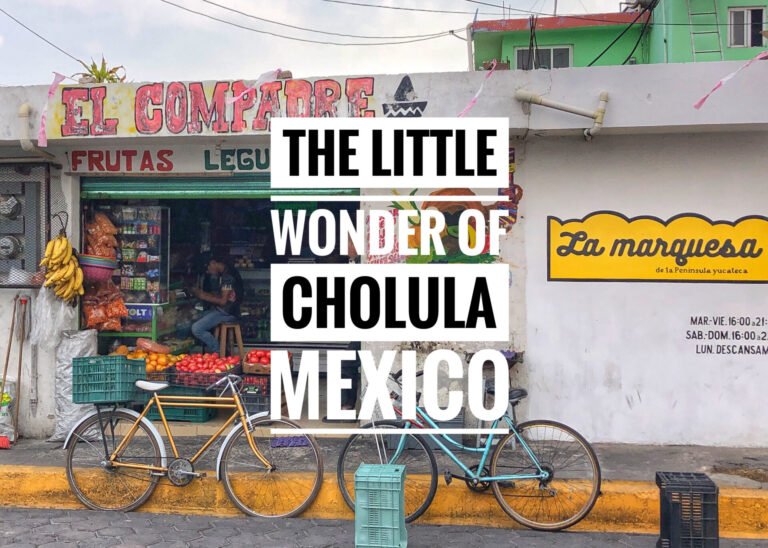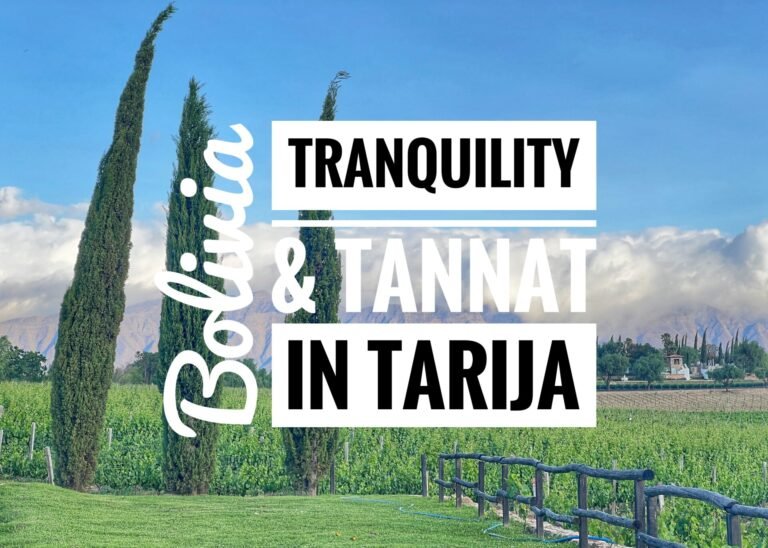
After six nights in our Luxor-ious apartment, it was time to buckle our seatbelts for some American-style gotta-fit-it-all-in-travel. Our itinerary for the next 13 days would be…2 nights, 3 nights, 2 nights, 2 nights, 1 night, 2 nights and 1 night and it started with an all-day wait in Luxor for our 10:30 night bus. (Yes, halfway through now, our batteries are waning!)
We chose GoBus, which transported us in reclining seats 8 hours to a city that unquestionably will not be featured in our “must return to list.” The overnight journey cost 1060 Egyptian or $43/two tickets for our favorite seats (behind rear door) and obviously saved us a night of accommodation….

In order to get to our bus from the station, we had to gallop across a freeway on ramp, backpacks jostling ungracefully, as we dodged speeding cars (without headlights because this is Egypt.)

GoBus also gave us a snack box. It was quite literally a sweet sentiment, being that it was stuffed with sugar. Mandy, who usually has a slightly higher tolerance for processed food, sampled the “Pasty” bread roll stuffed with “cheese” and promptly discarded it after one bite, but had little trouble inhaling Egypt’s version of a Ho-Ho. We rescued the water and Nescafé for later.

Arriving to one of Africa’s great megacities of 22 million people we were not surprised by our surroundings…a sea of bricked buildings, most of them unfinished and dilapidated, all accessorized with satellite dishes. Locals refer to Cairo as Umm al-Dunya, which translates to ‘mother of the world’. This reference is for the country’s ancient achievements and firsts that put it ahead of other cities. Of course, we were bound to see one of those.

We rolled into the city at 6:30 am (two hours EARLY!), both a bit bleary-eyed. But, it was enough sleep to be primed for the onslaught of taxi drivers at the bus station. We’d heard the stories and knew what to expect. However, when we arrived…nothing. This is an obvious advantage of taking private bus lines to the businesses rather than public lines to main stations where the foreigner-fare thirsty drivers await. Instead, we popped into the GoBus ticket office, bought our tickets to get the hell out of Cairo in two days, and proceeded to find an open restaurant nearby. Nothing else was open and the surroundings were dead. We also attribute this to Friday morning, the start of their weekend.


And of course…what else would be open nearby but good ‘ol McD’s. We were surprised at two things…the fancy ordering screens and the plethora of coffee options. Yes, it’s been a looooong time….But alas, we have to admit the McFalafel (only $.50!) was quite disappointing compared with pretty much every other falafel meal we had consumed in Egypt thus far.
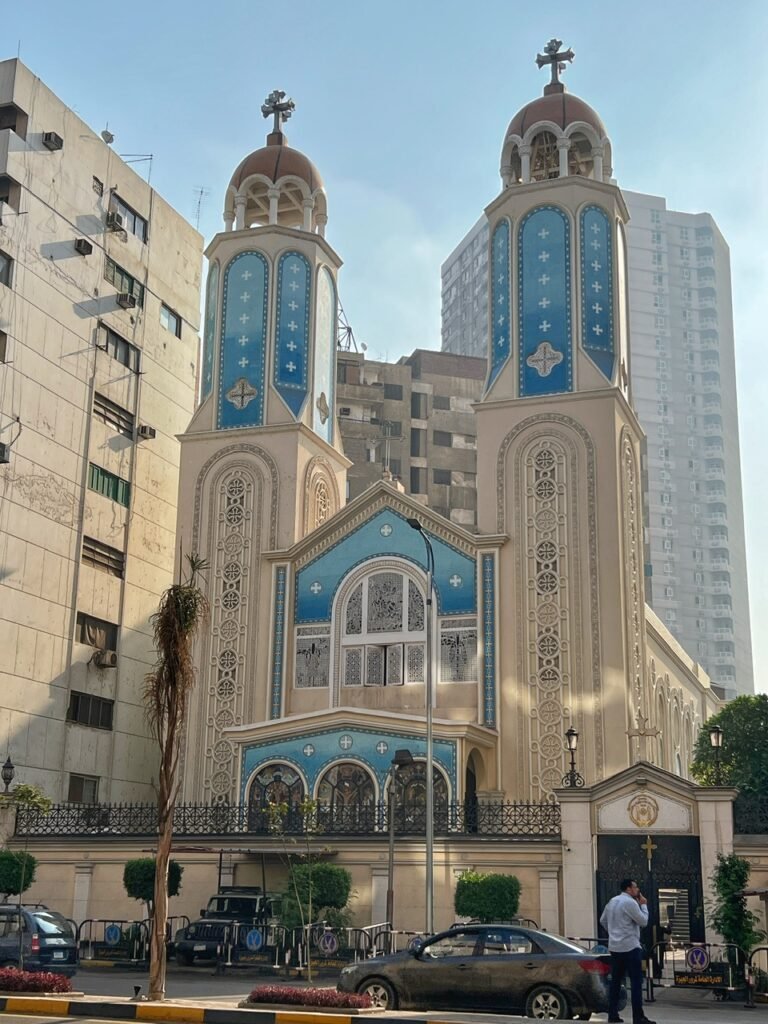
The loveliest church we saw in Egypt. As you can imagine, there was not a ton. Minarets far outnumber church bells in this Islamic society.

From here, we were able to call an Uber to shuttle us 30 minutes across Giza to the pyramids for $2.54. In a city very notorious for outrageous traffic, using Uber was not only cheap, but a very pleasant experience in sprawling Cairo every time. We had courteous, skilled and good drivers as well. And, as we rode the tide of almost exclusively elevated freeways, this journey was especially engaging when we suddenly caught sight of those ancient wonders through the stoplights and chaos for the first time. Basically, it’s the opposite effect of driving from the desert into Vegas and seeing the Great Pyramid of the Strip 🤣

The sea of Cairo envelops the pyramids. Yes, the pyramids are far from being “in the middle of the desert” as some images will have you believe. (Photo credit: Alamy)
Our Accommodation: Pyramids Overlook Inn
At about 9 am our Uber dropped us off at the entrance to the pyramids, only a few blocks down from our inn. A sizable school group was emitting a chattering ruckus that only kids can manage as they waited in line and we were immediately approached for a camel ride. Yes, please. We’d like to take all of our earthly possessions and sit atop a gangly beast for cheap price at this very moment!
Smiling politely, we shook our heads and instead maneuvered towards our place which was down a less frenzied dirt road amid wild dogs, a horse or two and local men shuffling about in jellabiyas (Arabic man dresses.)
Oh…and beyond a high stone wall, some stabels (yes, that’s how it was spelled), and some generally India-esque landscape, those legendary peaks were also looming before us.

The fatigue from our long bus ride was beginning to set in as we climbed the stairs to encounter our view for the next two days at the Pyramids Overlook Inn. Holy crap.

In reality, this was our view without the zoom. Apparently, this is currently the closest you can stay to the pyramids (unless you’re a wild dog.)

One might think this costs a lot of money and that everyone stays here.

But, in reality, this inn only includes four rooms and the majority of tourists stay in big box hotels in Cairo or Giza and get bussed in for the day.


However, this was not of interest to us when we could get a view like this for $28/night.

Although this pesky palm tree kept reminding us of 10th-grade geometry. ![]()

But, the sunsets couldn’t have been more glorious.

Especially as we observed the honking and chaos from afar of the crowds leaving the site for the day. Yes, there is a parking lot conveniently plopped between the Great Pyramid of Giza and the Pyramid of Khafre. Sadly, in recent years, there were many more inns near Pyramids Overlook, but the government in conjunction with Arab developers have been slowly taking over the land. In a few year’s time, those glitzy hotels may find their way to this very spot. According to our friend Mohammed, the same thing may be happening to the West Bank of Luxor. So if you want to have an authentic and budget-friendly experience in these tourist zones, it may be best to plan your trip soon!

Another advantage of staying at Pyramids Overlook was we got a free all-access pass to the $13 Sound and Light Show that happens nightly down below. And, while we watched, our cheery host brought us an assortment of Egyptian fruits including guava, dates and pomegranate seeds buried in sugar.


Unfortunately, they only played the sound and light show in French and Spanish and although we definitely understood some, it was far from ideal ![]() But in the end, it didn’t really matter.
But in the end, it didn’t really matter.
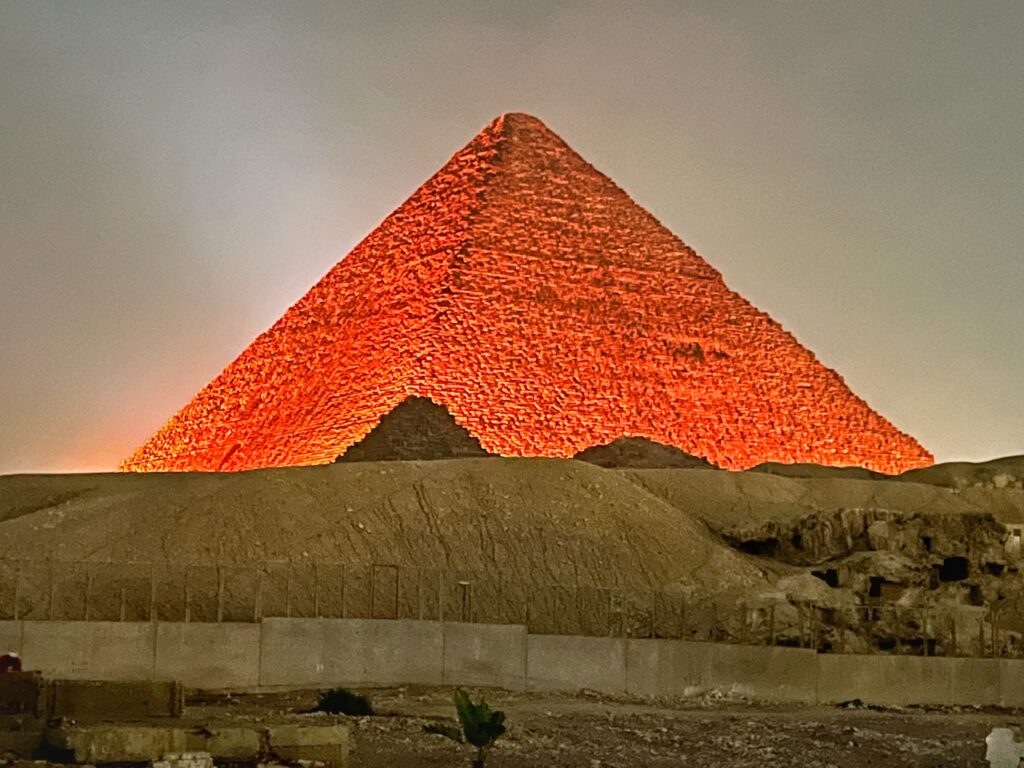
Because you’re simply ogling in wonder at some of the greatest man-made structures on earth.

This special effect was quite entrancing.

And in the middle of the night, “lulled” to sleep by the howls of street dogs, we both got blinded by a light outside. When we awoke, the nearly full moon was superbly almost crowning the peak of the pyramid. Of course, the photo doesn’t do this once-in-a-lifetime moment justice. Also, damn tree. Really. Hahaha.


The next morning, enjoying our coffee in the Bedouin tent, as well as complimentary breakfast.


For lunch, before we headed to the Egyptian museum, we grabbed lunch down the street at a truly local haunt called El Gizawy Restaurant. We got a sackful of delightful falafel, hummus, bread, and fava beans, which set us back about $2.50 total. Now that’s a cheap eat. See…there are many silver linings in Egypt. Even Cairo….![]()
![]()
The Egyptian Museum
We spent half a day visiting the vast Egyptian Museum, which is like stepping back in time in and of itself. This is because the museum opened in 1902 and has had very little updating, give or take a couple of coats of paint. It is dark, dreary, and feels like trekking into a historic vault where Indiana Jones would have plopped his findings in the 1940s.




It houses over 120,000 artifacts, including the contents of Tutankhamen’s tomb and most of the mummies that have been discovered since the 19th century. We just missed the brand new Great Egyptian Museum that will be opening in 2023 which will showcase the findings from King Tut’s tombs, as well as numerous other findings from the last century. The cost to visit was 200 Egyptian pounds per ticket or $8.25 and we accessed it by walking 20 minutes to the Mashaal Metro Station and taking the M7 Green Metro line to Tahrir Square.

One of the most astounding sites for us was the Great Hall of Mummies. 4000 years ago the Egyptians preserved their dead through mummification so that the soul could inhabit the body eternally. Mummification involved removing the internal organs and putting them in separate jars, drying them out completely, anointing it with oils and resins, and wrapping it in bandages, interspersed with amulets and jewels. By studying mummies one not only sees ancient Egyptians in person, but also learns about ancient diets, diseases, medical knowledge, funerary beliefs, and technology.
The Great Pyramids of Egypt
For many, the Great Pyramids of Egypt evokes many wondrous sighs, recollections of childhood dreams and fulfilled or broken promises to visit before they die. And with timing lined up impeccably and a cheap flight, it finally seemed like it was the opportunity to visit the only remaining wonder of the world, not to mention the other marvels of Egypt we saw.
But the reality of the pyramids is, it’s far from the starry-eyed desert escape that appears in photos. It’s engulfed by a surrounding blanket of chaotic Giza, Cairo’s sister city, including a notorious Pizza Hut, widespread vendors selling “authentic” Egyptian souvenirs (made in China) and you need to dodge horse or camel poo with every step you take.
But yes, it’s worth it. Undoubtedly.

As we mentioned, our hotel was perched within a few yards of the stone wall that protects the pyramids from a complete Giza takeover. This edited shot was taken from our upper patio at sunset.

Known as the oldest man-made monument in human history, the Sphinx is an exhilarating thing to see.
A few facts:
-The Sphinx likely came before the pyramids (possibly 6000-4500 BC) but nobody knows who exactly built it.
-It is massive and measures 241 feet long, 20 feet wide, and 66 feet high. (In meters, 73x6x20)
-It is based on a mythical creature. Although many believe it is the body of a lion, recent theories state it’s actually a dog because of the shape of its back. The face could possibly be of the pharaoh Khafre, whose pyramid is behind it, but this is also debated.
-It has an abnormally small head. Many believe this is because it was carved and recarved to represent many faces over time, which is why it could be much older.
-For centuries it was buried under sand.
-It was once very colorful. This is not surprising if you’ve seen Egyptian tombs.
-Technically, it’s not a Sphinx because a Sphinx has wings.
-At one point the Great Sphinx had a fetching goatee-style beard but he lost most of it to erosion. What was left of it got jacked by the Brits to stick in the British Museum in London. 🙄
(Source: Mental Floss & Travel Egypt)

Away from the crowds and vendors, (yes, it’s possible!!) the serenity and power of this place is mind-boggling. It makes you feel so microscopic, in size and in the concept of time.

The pyramids as seen from a distance, which can be acquired most easily on horse or camelback.

The sun crowns the Great Pyramid of Giza.

The pyramids host 14.7 million visitors every year so we knew to arrive right at 8 am to avoid as many crowds and tour buses as possible. At the ticket window, we paid 580 Egyptian or about $12 each to enter, making it one of the cheapest world wonders we’ve encountered.

Because we arrived at 8, we also avoided the gauntlet of Tourist Tut Tat on the way in.

The Sphinx from the side. See? No hump. Lions have humps. Or was it just chiseled away like the tiny micro-head?

Arriving at 8 did mean that the camel drivers corralled their buddies in at the same time. Fortunately, we completed our riding a camel experience in Jordan, and never needed to do that again, so we were not in the market for this particular adventure. Regardless, we naturally heard lots of, “you want camel ride?”, “you need camel photo?” “where you from?”
How to handle them and others that follow you around:
-Don’t engage if they ask you questions.
-Just to say no thank you or ignore them all together.
-Walk with purpose.
-Never make eye contact.
-Say “la la la la la” (no, no, no, no…)
-Don’t ever say “maybe later” because they WILL find you. 🤣
-Don’t get on a camel at all. A common scheme is to charge you a very low price (like $1) to get on, and then a ludicrous amount ($20) to get off.

It also helps to do a lot of “zigzagging with purpose” to avoid them. Hehe.



Mandy heading up the Pyramid of Khafre, created around 2500 BC. We couldn’t have asked for a better day to be at the pyramids. The weather was clear, sunny and temperature spring-like and perfect. The time to be in a Egypt…November!!


A caravan of camels head for the tourists, who believe it or not, are bussed into a parking lot tucked between the two largest pyramids. This is where you really need to steer clear of, unless you actually want some Tiny Tut Tat.

In front of Khafre, the second biggest is the steepest pyramid at a 53-degree angle. The upper part still retains the original limestone coating, which covered the entire pyramid and likely gleamed like a beacon when it was white and polished upon creation. We actually thought the entire pyramid would be smooth and were surprised to find it rigid and stacked like the ones from the Aztec empire.


The weight of the pyramid is estimated to be 6 million tons and was built with over two million stone blocks, each weighing 25-80 tons. And, no, they were not built by slaves, but instead by 20-40,000 workers who received a daily wage, food and living quarters. (weforum.org).
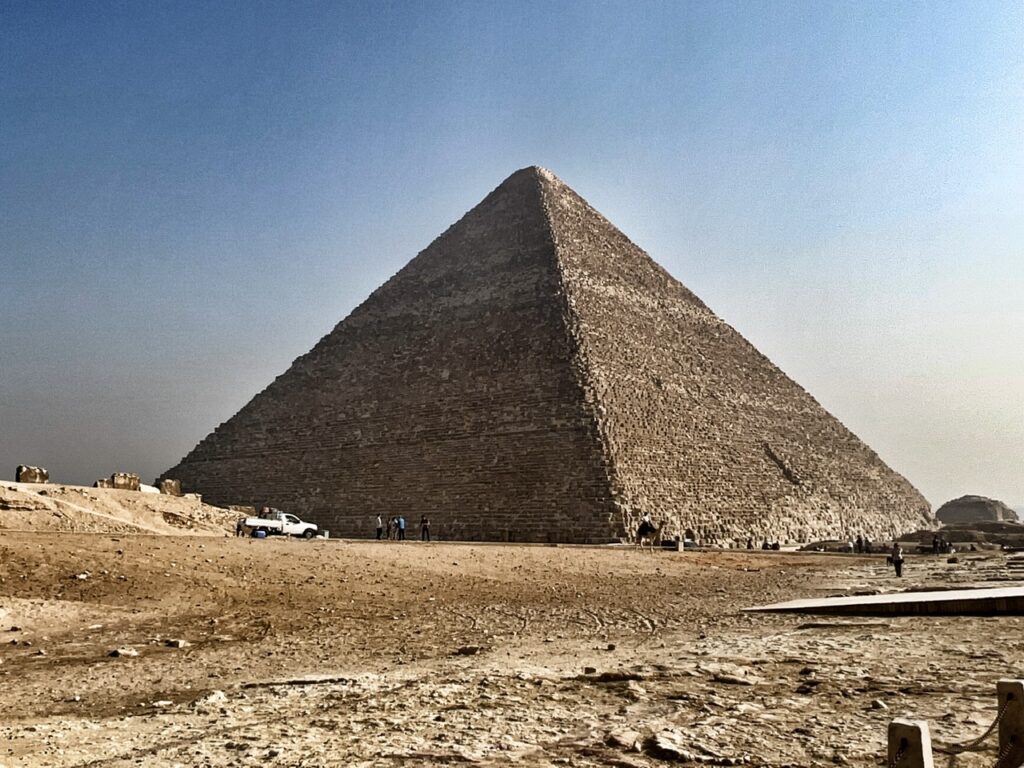
These pyramids held the Guinness Book of World Records award for being the tallest man-made structures in the world for over 3700 years until London’s Old Saint Paul Cathedral was built in 1221.

Visitors also have the option to head inside the pyramids (for extra pounds of course.) We chose Khafre over the Great Pyramid because we read it’s basically the same and the cost was around $4, versus $16. Also, at 8 am there was no queue or crowds. A very good decision.


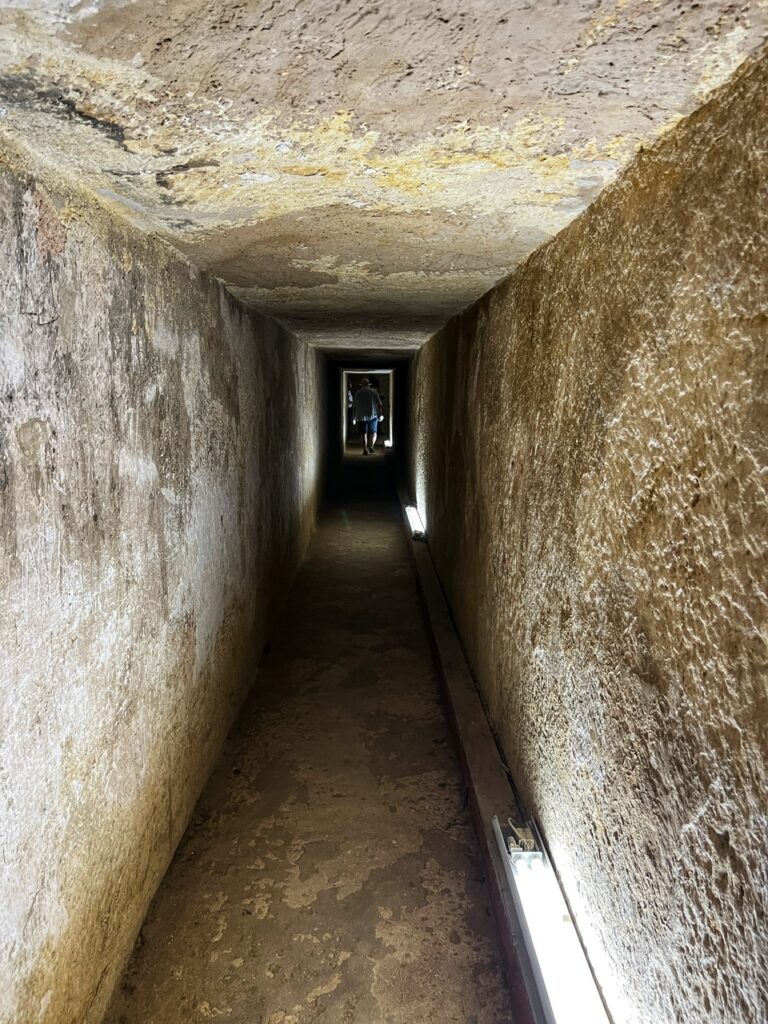
You first head down a very long and steep corridor into the bowels of the pyramid. Then, it’s flat for a bit…

…and then you go UP into the tomb. The first Europeans to discover this pyramid was Giovanni Belzoni. In 1818, he discovered it was empty; the treasures and sarcophagus/mummy combo had long been removed. Previously, the Arabs had discovered it in 1372, also vacant. It’s likely it was actually looted and emptied as long ago as 4,000 years. (Egypttimetravel.com)


What’s left of the raided tomb. A few moments later, a herd of our great countrymen appeared, whose guide encouraged them to disregard the stanchions and climb around taking “Walk Like an Egyptian” snapshots on the sarcophagus. 🙄
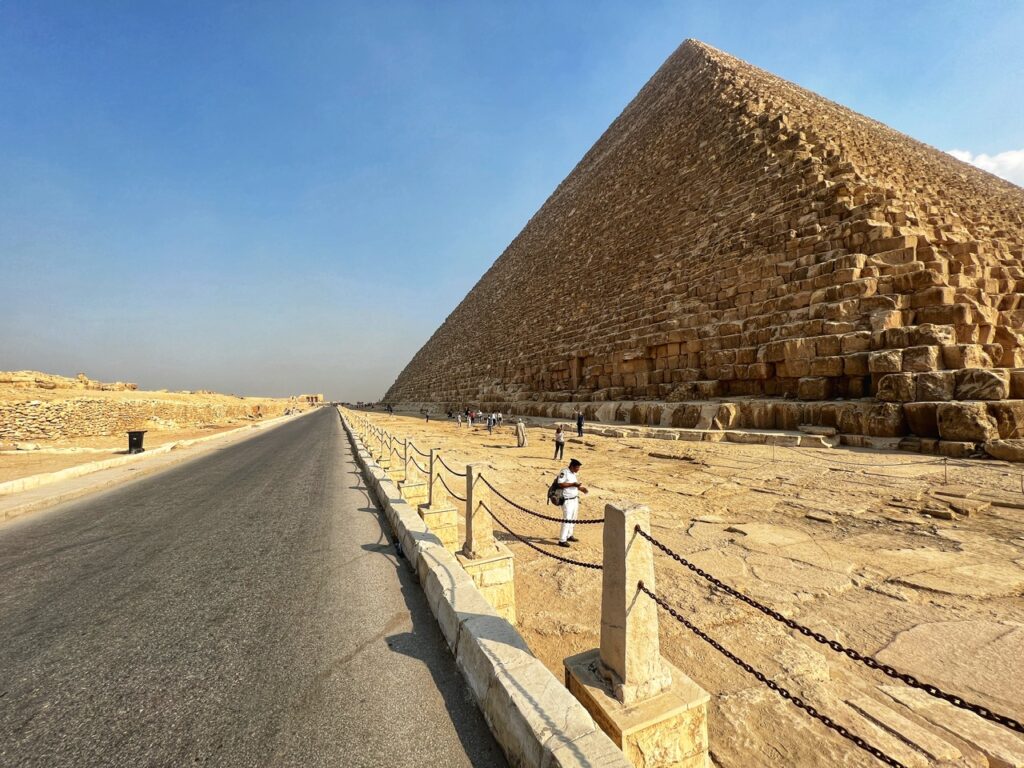
Heading back out, we walked to the Great Pyramid. This pyramids’ sides are aligned exactly to the cardinal directions (North, South, East, West.)
It was around here we started seeing lots of guides and opportunistic locals posing clusters of tourists for cheesy forced perspective photos like “touching the pyramid” or framing it with their hands. Ummm…Go for it. But just make sure your baksheesh (tip! tip!) is ready!


Model Mandy stands for scale. The Great Pyramid, slightly higher by 10 meters, is 481 feet or 147 meters. It used to be slightly taller but the tip eroded off into the sand below.

A cluster of tourists wait to enter the Great Pyramid for 400 Egyptian pounds/$16 a pop. No, Egypt is not hurting for tourist dollars anymore. 😆

A couple of wild dogs in front of the Great Pyramid. As mentioned before, the dog population is utterly out of control in Egypt. They are commonly referred to as “baladi dogs,” and strays are widely viewed as unsanitary and dirty. They are usually seen running around the streets and scavenging garbage for food. This has led to hundreds of human deaths from rabies as well. It’s really heartbreaking…and also infuriating. We’ve never witnessed so many howling street dogs at night. And earplugs didn’t cut it either. Full article: https://www.arabnews.com/node/1443656/offbeat

The third pyramid of Giza is called Menkaure. It is an easy walk from Khafre, but the camel dudes will have you believe it’s MILES away 🤣


Although these are the most well-known pyramids, there are actually 130 in all of Egypt. At the bottom of Menkaure, you can still find a layer of pink granite. This granite, which used to cover this pyramid, was astoundingly shuttled up from Aswan some 800+ kilometers away. It’s disturbing to think of the animal power that likely got that to Giza.

Like tiny ants, camels carry tourists on the horizon. We really weren’t fans of the way the camels were being treated.

The little tombs were made for queens near Menkaure.

360 view of Giza from inside the pyramids. The tsunami of Cairo at right.
*
*

We were shocked to find what appeared to be a house on the site of the pyramids. We have no idea why but it’s a bit perplexing.

Because we had an entire day to kill as we waited for another night bus, we hesitantly decided to take a horseback ride to see the panoramic view of the pyramids at sunset, which was a splurge at $25/each. The horses seemed healthy and well cared for, but afterward, we felt a bit regretful because… A. We saw how other people were treating other horses (not nice), B. we missed the sunset entirely and also, C. our guide was a horrible photo taker, but we do promise there were three pyramids behind us.🤣 No, this experience really wasn’t worth it, and we really don’t recommend it.


